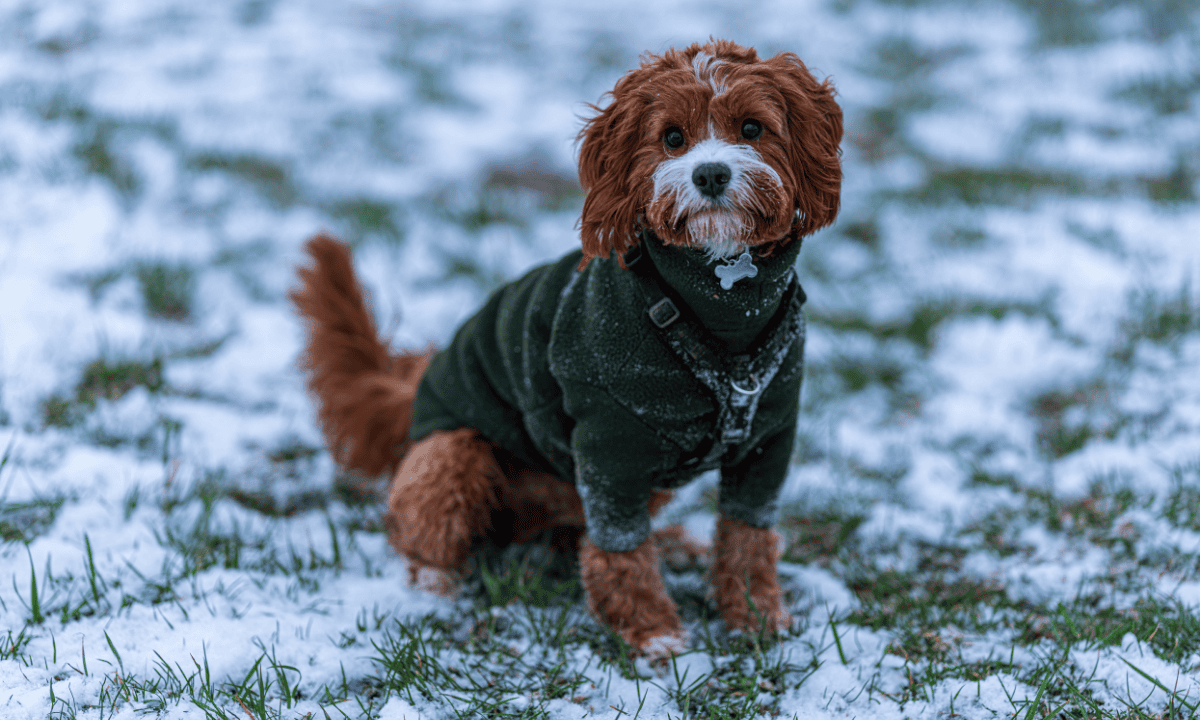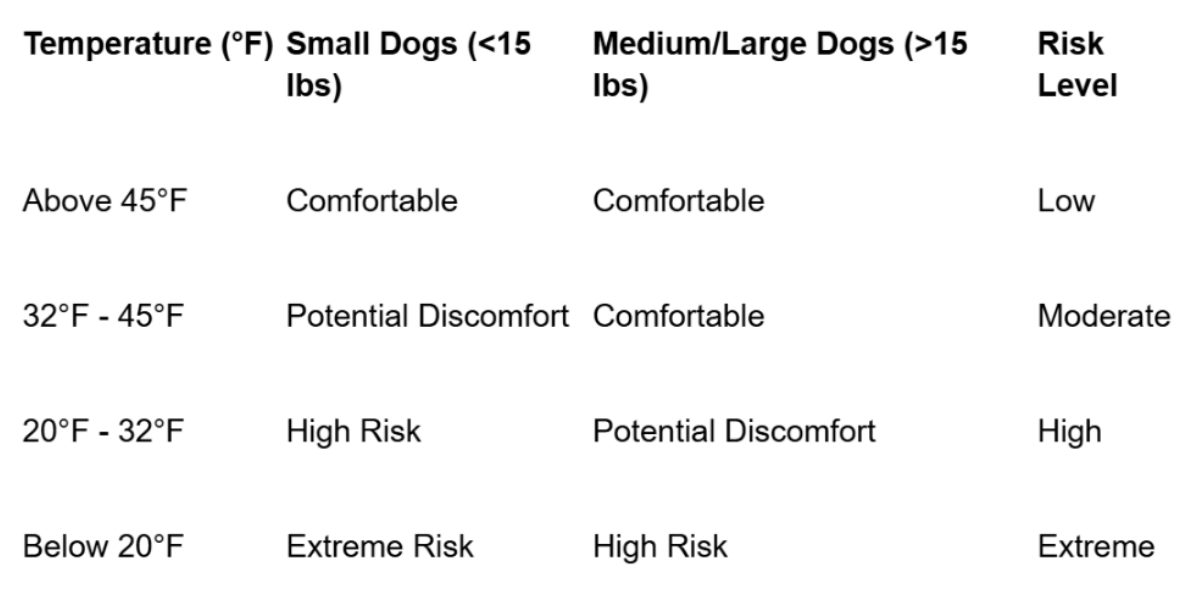When is it too Cold to Walk Your Dog?
12 March 2025
Walking your dog is essential for their physical and mental well-being, but when temperatures drop, it’s crucial to know when it’s too cold to walk your dog. Cold weather can pose serious risks to your furry friend, from frostbite to hypothermia.
In this comprehensive guide, we’ll explore how to determine the safest conditions for walking your dog, provide tips for keeping them warm, and answer common questions about cold-weather dog care. Whether you’re a seasoned pet owner or a first-time dog parent, this guide will help you navigate cold-weather walks with confidence.
How Cold Is Too Cold to Walk Your Dog?

The answer to this question depends on several factors, including your dog’s breed, size, age, and overall health. While some dogs, like Siberian Huskies or Newfoundlands, are built to thrive in freezing temperatures, others, such as Chihuahuas or Dachshunds, are more sensitive to the cold.
Here’s a quick breakdown:
- •Small dogs or those with thin coats should avoid walks below 7°C (45°F).
- •Medium to large dogs with thicker coats can handle temperatures down to -6°C (20°F).
- •All dogs are at risk in temperatures below -9°C (16°F).
A good rule of thumb: If it’s too cold for you to be outside comfortably, it’s likely too cold for your dog. Always Prioritise your pet’s safety over their exercise routine during extreme weather.
Dog Walk Temperature Chart
To help you determine the safest conditions for your dog, here’s a handy temperature guide:

This chart is a general guideline. Always consider your dog’s individual needs and monitor them closely during cold-weather walks.
Signs Your Dog Is Too Cold
Even if the temperature seems safe, your dog might still feel uncomfortable. Dogs can’t tell us when they’re cold, so it’s up to you to watch for these signs:
- •Shivering or trembling: This is a clear indication that your dog is trying to generate heat.
- •Whining or anxiety: Some dogs Vocalise when they’re uncomfortable.
- •Lifting or licking paws: Cold or irritated paws may cause this Behaviour.
- •Tucked tail: A tucked tail can signal discomfort or stress.
- •Stiff movements or slowing down: Cold weather can make joints stiff, especially in older dogs.
- •Shallow breathing: This may indicate your dog is struggling to stay warm.
If you notice any of these Behaviour, cut the walk short and head indoors straight away. Prolonged exposure to cold can lead to hypothermia or frostbite, both of which require urgent veterinary care.
Tips for Walking Your Dog in Cold Weather
If you decide to brave the cold, follow these tips to keep your dog safe and comfortable:
1. Dress Your Dog Appropriately
Small or short-haired breeds, like Chihuahuas or Greyhounds, benefit from dog sweaters, coats, or boots. Brands like Barbour and Ancol offer high-quality options that provide warmth without restricting movement.
2. Keep Walks Short
Limit walks to 15-20 minutes in freezing temperatures. Focus on toilet breaks and indoor playtime instead. For larger breeds, 30 minutes is the maximum in above-freezing conditions.
3. Choose the Right Time
Walk during the warmest part of the day, typically midday. Avoid early mornings and late evenings when temperatures are at their lowest.
4. Protect Their Paws
Ice, salt, and de-icers can damage your dog’s paws. Use dog booties or apply paw wax before heading outside. After walks, wipe their paws with a warm towel to remove any residue.
5. Dry Them Off
If your dog gets wet from rain or snow, dry them off straight away with a warm towel. Wet fur can lower their body temperature and increase the risk of hypothermia.
6. Adjust Their Diet
Dogs use more energy in cold weather to keep warm. Adding warming, high-protein foods like lamb, turkey, or venison to their meals can help them maintain their body temperature.
Dog Breeds That Handle Cold Weather Best
Some breeds are naturally equipped for colder climates due to their thick coats and sturdy builds. These include:
- •Siberian Huskies
- •Alaskan Malamutes
- •Bernese Mountain Dogs
- •Newfoundlands
- •Samoyeds
Even these cold-tolerant breeds need protection in extreme conditions. Always monitor your dog for signs of discomfort and adjust their outdoor time accordingly.
Keep Your Dog Safe and Warm
Knowing when it’s too cold to walk your dog is essential for their health and happiness. By understanding your dog’s unique needs and taking precautions, you can ensure they stay safe and comfortable during winter. Remember, if it’s too cold for you, it’s too cold for your dog. Stay warm, stay safe, and enjoy the season with your furry companion!
By following this guide, you’ll not only protect your dog from the cold but also strengthen your bond through safe and enjoyable winter activities. Walk your dog responsibly, and they’ll thank you with wagging tails and endless love! Whether you’re bundling up for a quick stroll or staying in for a cosy play session, your dog’s well-being is always the top priority.